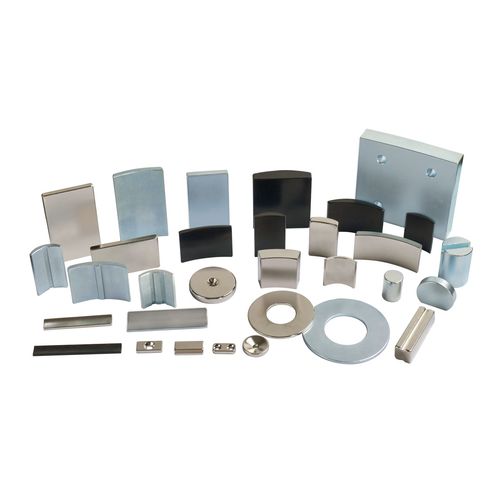How to Choose High-quality NdFeB Magnets?
The sintered NdFeB permanent magnets of 1cm 3 will be oxidized and corroded when they are left in the air at 150 C for 51 days. It is easier to be corroded in weak acid solution.
In order to make Nd-Fe-B permanent magnet durable, it is required to have 20-30 years of service life, it must undergo surface anti-corrosion treatment, in order to resist corrosive medium on the magnet corrosion damage.
Nowadays, sintered Nd-Fe-B manufacturers generally adopt plating metal, plating + electroless metal, electrophoretic coating, and phosphating treatment to coat the magnet surface with an additional layer of isolation, separating the magnet surface from the corrosive medium, in order to prevent the damage to the medium to the magnet.

- Manufacturers generally zinc plating, nickel plating + copper + nickel, nickel plating + copper + electroless nickel plating three main processes, other metal plating requirements, are generally applied after nickel plating with another metal plating.
- in some special cases, phosphating can also be used:
(1) Phosphating is simple and easy to use when the NdFeB magnet product is not clear about the subsequent surface treatment method because of its turnover, long storage time;
(2) When the magnet needs epoxy bonding, painting, etc., the adhesive force of epoxy organics such as glue and paint needs the matrix to have a very good invasion performance. The phosphating process can improve the penetration ability of the magnet surface.
(3) Electrophoretic coating has become one of the most widely used anticorrosive surface treatment technologies. Because it not only has good adhesion with the surface of the porous magnet but also has salt spray resistance, acid resistance, alkali resistance, and other corrosion resistance, excellent corrosion resistance. But compared with spray coating, it has poor moisture and heat resistance.
Customers can choose coatings according to their product requirements. With the expansion of the field of motor application, customers have higher requirements for the corrosion resistance of NdFeB. The HAST test (also known as the PCT test) is specially designed to test the corrosion resistance of sintered neodymium permanent magnets in a humid and high-temperature environment.
And how do customers determine whether the coating meets the requirements?
The purpose of the salt spray test carried out by the Nd-Fe-B manufacturer is to do fast corrosion protection test on sintered neodymium magnet with an anti-corrosion coating. At the end of the test, the sample is taken out from the test box and dried. The color change of the box with or without speckles and speckle area on the surface of the sample is observed by eyes or magnifying glass.
Why do neodymium magnets appear with rust spots and how to avoid them?
After a period of time, the surface of neodymium magnet will appear white or other colors of spots, slowly develop into rust spots, under normal circumstances, electroplated magnet coating is not easy to appear rust spots, rust spots generally occur due to the following reasons:
- Magnets are stored in damp, airtight, and temperature-changing areas.
- The dirt on the surface of the magnet before plating is not well cleaned.
- Plating time is not enough for process problems.
- The magnetic oxidation of the magnet is caused by the breakage of the packaging seal.
Under normal conditions, rust stains should not appear on the surface of magnet electroplating coatings. NdFeB magnet should avoid the following safekeeping methods:
In areas with excessive humidity and poor air circulation, rust stains may occur even when the temperature difference varies considerably, even if the salt spray test qualified products are stored in harsh environments for a long time.
When the electroplated products are stored in a harsh environment, the further reaction between the base layer and the condensate will result in the reduction of the adhesion between the base layer and the coating, and in serious cases, it will also cause local powdering of the substrate, and then natural peeling. Electroplating products should not be placed in a high humidity area for a long time. They should be placed in a cool and dry place.
For more information, please visit https://www.usneodymiummagnets.com/